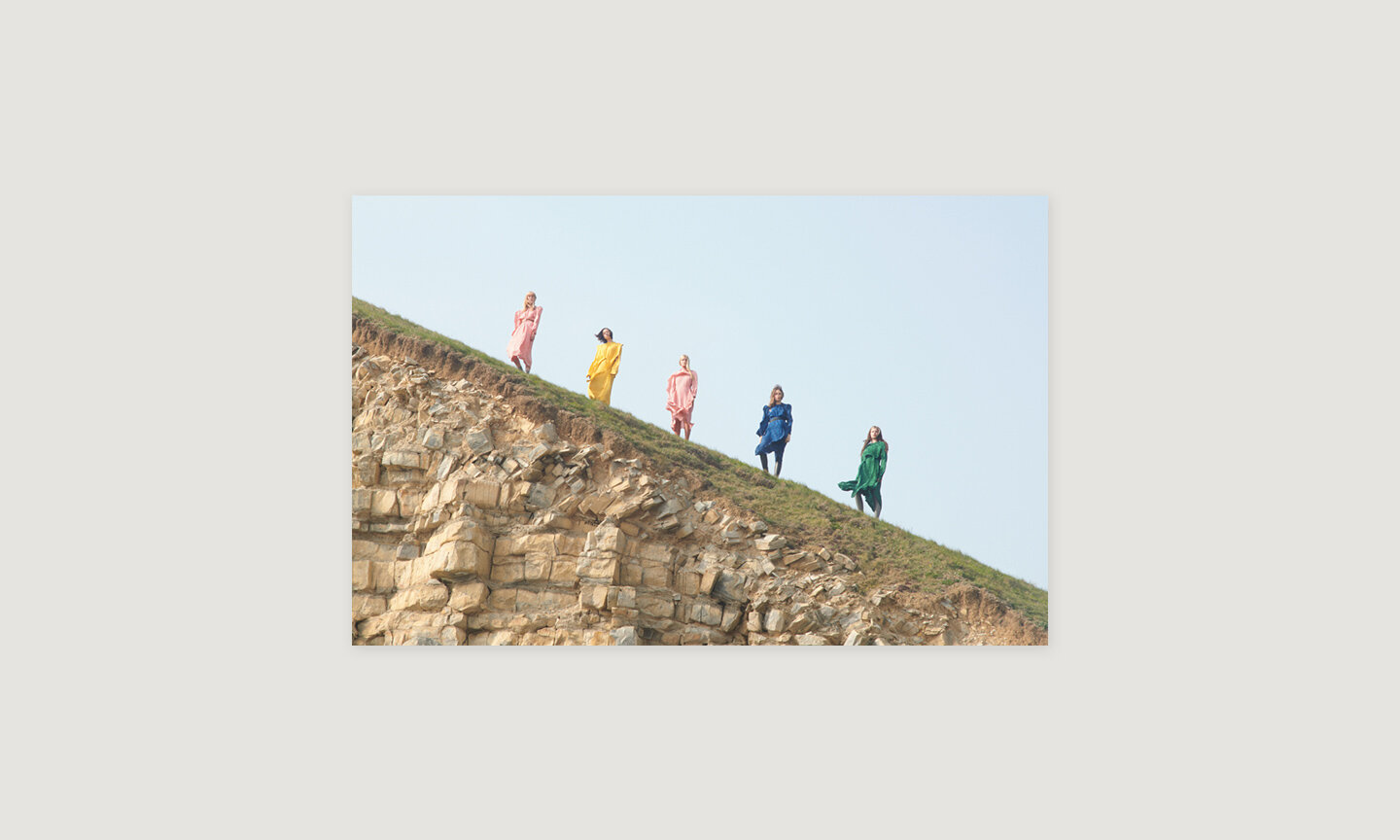Op-Ed | A Sign Of The Times
Trend Analysis / Writing
In an Op-Ed for Trendalytics’ clients and other fashion professionals, I examined the significance of 1960s counterculture and how modern movements have spurred the fashion industry’s renewed fascination with hippie style.

Young women draped in peasant dresses and crowned in flowers bring your cultish nightmares to life at a fabled midsummer festival. At the same time, you’re transported to the infamous Spahn Ranch as you land in the grips of Charles Manson and his denim-clad followers. It takes as much as a glance around to see that our modern culture is captivated by the visuals of 1960s counterculture and the hippie archetype. With Midsommar and Once Upon a Time In Hollywood, the entertainment industry shines a sinister light on the era.
The fashion industry, however, tends to take a more subtle approach. In fact, many of the trends we wear today are rooted in the counterculture of the 1960s. Although some may argue that this is merely a coincidence made possible by the cyclical nature of fashion, it is evident that this movement is intentional. One of the most tumultuous and divisive decades in American history, the 1960s were subject to tensions that are still very relevant today. So too are our reactions to them. Counterculture movements in the 1960s, and hippies in particular, had a distinctive brand of rebellion that designers and marketers are instinctively drawn to. If not for the aesthetics, the industry is fascinated by the era for the underlying meaning of its tie-dye t-shirts and flowing silhouettes.
Just as we did in the late 60s, we react to the recent escalation of social conflicts by clinging to a more idealistic worldview and embracing the hippie movement. A movement that promoted peace and love in the presence of hatred and war. One that made us reexamine our lives to better understand what we were doing and why we were doing it. As we once again question our nation’s actions and crave an escape from conflict, we embrace the same colorful styles and freeing silhouettes we did 50 years ago.
Hippie culture found expression in music, literature, fashion, and the visual arts, so it’s only fitting that it re-emerges on the runway. Both a cultural force and a communication tool, fashion has a reach unlike any other art form. As we look toward the future, we must learn from it what we can. The fact that we are embracing a movement grounded in peace, love and positive change in the face of seemingly insurmountable conflict should give us hope. Let this optimism and activism be what informs us as we enter the next decade.